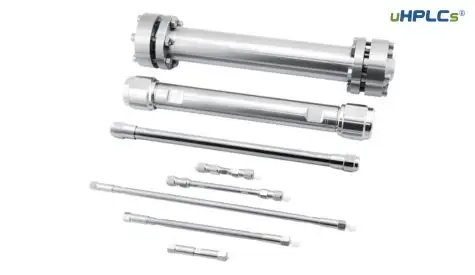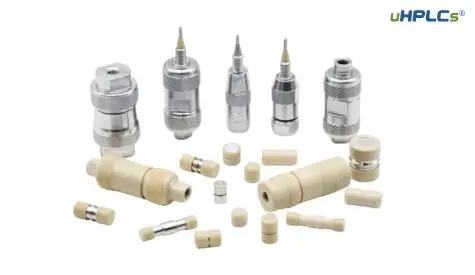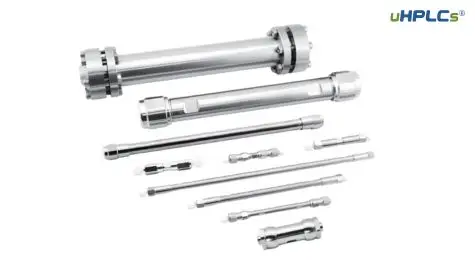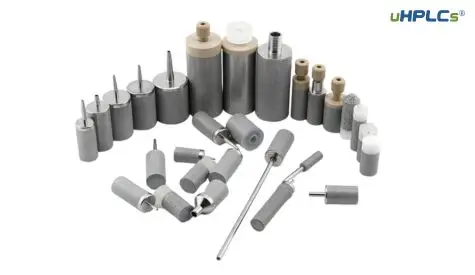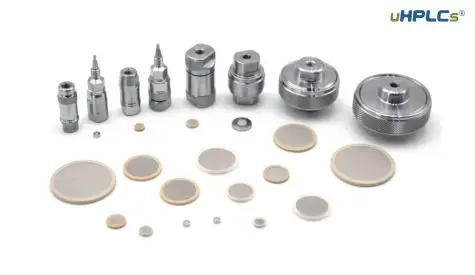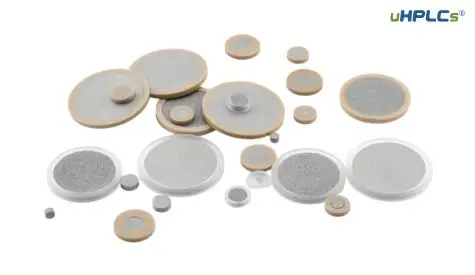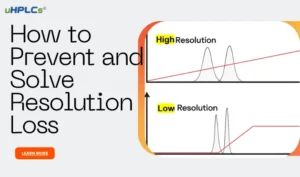Types of Columns Used in HPLC
Why use HPLC Columns ?
High-Performance Liquid Chromatography (HPLC) is a common analytical technique used in chemistry, biochemistry, and other sciences to separate, identify, and quantify compounds. The use of columns is crucial in any HPLC laboratory as they serve as the separation mechanism in the technique.
Columns are available in different types depending on the separation mechanism and the nature of the sample to be analyzed. Their use is critical to obtaining accurate and reliable analytical results in HPLC laboratories. Without an appropriate column, it would be impossible to separate the components of the sample, and the analysis would be inaccurate and incomplete. Therefore, the use of columns in HPLC labs is necessary and essential for effective and accurate analysis of samples.
In this blog post, we will be discussing the different types of columns used in High-Performance Liquid Chromatography (HPLC). We will explain what they are, how they work, and what their main benefits and drawbacks are. By the end of this blog post, you will have a good understanding of the different types of columns available in the market and be able to make an informed decision when selecting an HPLC column that suits your requirements the best.
1.Reverse-Phase HPLC Columns
The most widely used type of column in HPLC is the reverse-phase column. These columns use a non-polar stationary phase and a polar mobile phase. This causes the polar molecules to elute faster from the column, while non-polar molecules elute slower. Reverse-phase columns are effective at separating non-polar compounds, such as lipids and sterols. At uHPLCs, we offer a wide range of reverse-phase HPLC columns that are optimized for different types of samples.
Advantages:
-
- High resolution and sensitivity.
-
- Wide range of selectivity.
-
- Compatible with a range of detectors.
Disadvantages:
-
- Limited capacity for polar compounds.
-
- High backpressure due to small particle sizes.
2. Ion-Exchange HPLC Columns
Ion-exchange columns separate analytes based on their charge. The stationary phase in these columns contains charged groups that attract analytes with opposite charges. The mobile phase contains a salt that competes with the analytes for binding to the column. Ion-exchange columns are used to separate charged molecules, such as amino acids and proteins. Our ion-exchange HPLC columns are designed for high-resolution separations of complex mixtures.
Advantages:
-
- High resolution for charged molecules.
-
- Good selectivity.
-
- Useful for protein analysis.
Disadvantages:
-
- Can lead to ion suppression.
-
- Limited capacity for highly charged molecules.
3. Size-Exclusion HPLC Columns
Size-exclusion columns use a porous stationary phase that separates analytes based on their size. Small molecules are trapped inside the pores of the column, while larger molecules pass through the column faster. Size-exclusion columns are used to separate molecules based on their molecular weight. Our size-exclusion HPLC columns are designed for high-resolution separations of polymers and proteins.
Advantages:
-
- Non-destructive and gentle separation.
-
- High resolution for large molecules.
-
- Compatible with a range of detectors.
Disadvantages:
-
- Limited selectivity.
-
- Long run times and low efficiency.
4. Normal-Phase HPLC Columns
Normal-phase HPLC columns have a polar stationary phase and a non-polar mobile phase. They are useful for separating polar compounds such as carbohydrates, amino acids, and peptides.
Advantages:
-
- High capacity for polar compounds.
-
- Useful for separation of chiral compounds.
-
- Gentle separation conditions.
Disadvantages:
-
- Can lead to lower sensitivity for non-polar compounds.
-
- Limited selectivity for some compounds.
5. Chiral HPLC Columns
Chiral HPLC columns have a stationary phase with chiral selectors that separate enantiomers. They can be used with a range of detectors and are sensitive and accurate.
Advantages:
-
- Good resolution for chiral compounds.
-
- Compatible with a range of samples.
Disadvantages:
-
- Can be expensive.
-
- Lower capacity compared to other columns.
-
- Limited selectivity for some compounds.
How to Choose the Right HPLC Column
Choosing the right HPLC column for a particular application involves considering many factors such as the nature of the target compound, its chemical properties, the sample matrix, and the specific requirements of the analytical method. Here are some general guidelines to help you choose the most appropriate column for your application:
- Consider the Chemical Properties of the Sample: The chemical properties of the sample are a crucial factor when selecting an HPLC column. Consider whether the target compounds are polar or non-polar, acidic or basic, and whether there are any known impurities in the sample. This information can help narrow down the column selection to those best suited to the sample.
- Determine the Separation Mechanism Required: Different columns separate molecules using different mechanisms such as reverse-phase, ion exchange, and size exclusion among others. Depending on your sample and the desired results, you’ll need to choose the column type that separates the molecules in the most effective way. For example, reverse-phase columns are best suited for non-polar compounds, while ion-exchange columns are best suited for charged molecules.
- Select the Column Particle Size: HPLC columns contain particles that determine the column’s packing efficiency. Different particle sizes are available for different types of columns such as 3µm, 5µm, or 10µm. The smaller the particle size, the higher the resolution and better the separation achieved. However, smaller particle sizes also lead to higher backpressure, which may cause problems with the instrument’s pumps.
- Consider the Column Length: Longer columns lead to better separations but take more time to run. Shorter columns are often used for rapid separations that require a faster throughput. Selecting the right column length depends on balancing the desired separation with the throughput requirements.
- Optimize the Instrument Conditions: Fine-tuning the instrument conditions can also improve the column’s performance and enhance the separation. This can include optimizing the mobile phase’s pH, flow rate, and temperature, among other conditions.
- Seek Expert Advice: If you are not sure which HPLC column is best suited for your application, consult with an expert in the field. Experienced chromatographers can offer guidance and suggest optimal column selection based on their knowledge and experience.
By following these guidelines and selecting the proper column, you can achieve optimal separation and obtain high-quality analytical results tailored to your specific application. Visit uHPLCs today to explore our range of HPLC columns and related products that are specifically designed to meet your analytical needs.
If you are looking for high-quality HPLC columns that are both affordable and reliable, then look no further than uHPLCs. Our HPLC Columns are designed to deliver superior performance and precise analytical results. Our products are rigorously tested to ensure quality and consistency, and our prices are competitive and affordable. We are confident that once you try our products, you will be convinced of their quality and effectiveness.
With uHPLCs, purchasing HPLC Columns, Empty Column, Guard Column, and other products is a breeze. Simply visit our website and browse through our product range. You can easily place an order through our hassle-free online ordering system. Our products are shipped worldwide, and we offer fast and reliable shipping.
So why wait? Contact uHPLCs today!



